Written by Darian on December 18, 2015 |

In this day and age, it can be argued that great customer service is often one of the most important traits that a business can encompass. The Internet has procured the ultimate “informed user,” through such websites as Yelp, WebMD, and Facebook to name a few. In just minutes, individuals can find Mission Statements, reviews, and information on specific businesses, specialists, injuries, and recoveries. Not only is there an overabundance of information available, there is also the opportunity to be able to choose who and what services you would like. In the physical therapy world, it is the right of the patient to be able to choose which facility they want to go to, whether they have a prescription or not (Direct Access). It is these “informed users” that have made customer service such an integral part of a business, transforming the old adage “the customer is always right” to “the customer must receive the best we can give them and more.”
Continue Reading »
Written by Bill on August 19, 2015 |
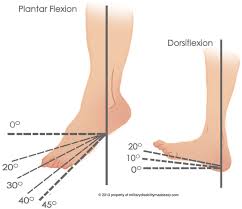
Recent articles in this series have discussed various conditions affecting the lower leg and foot, specifically Achilles’ tendon injuries, ankle sprains and plantar fasciitis. All of these conditions manifest as pain in different areas of the lower extremity, yet they all have a common link. The shared common factor among these conditions is limited ankle dorsiflexion, or the ability of the distal foot to move upward toward the shin (“toes to nose”). Limited dorsiflexion is commonly seen following ankle sprains and fractures, especially when a period of immobilization follows trauma. This limited mobility can also set the stage for dysfunction (and pain) in other areas of the body, as the body functions as a “kinetic chain”, or an interconnected series of levers and joints. However, limited ankle dorsiflexion is not the only “guilty party” that has a tendency to affect other regions. Limited joint mobility, weakness of specific muscles, or excessive mobility can all have negative effects inother areas of the body.
Continue Reading »
Written by Bill on August 5, 2015 |
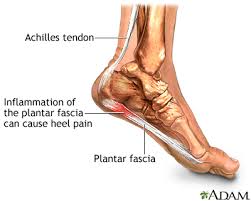 Most people have heard of plantar fasciitis and know that it is a fairly common affliction of the foot. But many fewer individuals know what plantar fasciitis is (and how in the world “fasciitis” is actually pronounced!). Plantar fasciitis (“fash-ee-itis”) is a condition that affects the plantar fascia, a band of dense connective tissue (“fascia”) located at the bottom, or “plantar” surface of the foot, typically at the area of the heel bone (calcaneus). One of the most common foot problems addressed by health care professionals, plantar fasciitis is thought to affect upwards of 2 million Americans per year, and is estimated to affect one in ten individuals during their lifetime.
Most people have heard of plantar fasciitis and know that it is a fairly common affliction of the foot. But many fewer individuals know what plantar fasciitis is (and how in the world “fasciitis” is actually pronounced!). Plantar fasciitis (“fash-ee-itis”) is a condition that affects the plantar fascia, a band of dense connective tissue (“fascia”) located at the bottom, or “plantar” surface of the foot, typically at the area of the heel bone (calcaneus). One of the most common foot problems addressed by health care professionals, plantar fasciitis is thought to affect upwards of 2 million Americans per year, and is estimated to affect one in ten individuals during their lifetime.
Continue Reading »
Written by Bill on July 30, 2015 |
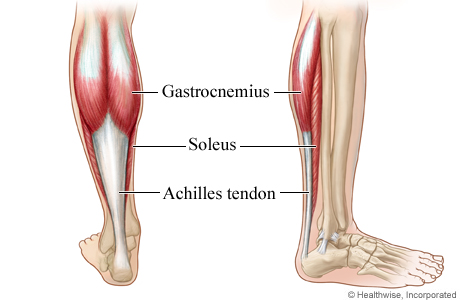
Tendon injuries are among the most common injury types affecting the lower extremity, with involvement of the Achilles’ tendon being especially prevalent. Achilles’ pain can affect young and middle age athletes, as well as the less active and older individual. Achilles’ injuries vary in the type of tissue damage involved, and treatment of these injuries can vary dramatically, depending on the state of the tendon. Damage to the Achilles’ can vary from an acute inflammation (“tendinitis”), to a chronic degenerative state (“tendinosis” or “tendinopathy”), to complete tearing or rupture of the tendon. All three of these conditions generally involve a problem with loading of the tendon, yet each one demands a significantly different treatment approach.
Continue Reading »
Written by Bill on July 8, 2015 |
 Ankle sprains are the most common injury of the lower extremity, affecting a large percentage of the sporting population, especially those participating in contact and collision sports such as basketball, football and soccer. Ankle sprains are especially prevalent in younger athletes, with the greatest incidence of injury occurring duringthe mid to late teen years. Ankle sprains are commonly underestimated regarding the functional restrictions that take place and the long-term negative effects that can occur among those affected. Recurrence of ankle sprains is estimated to be as high as 40-70%, especially among individuals participating in higher risk sports. Long-term negative effects can include need for surgical repair of damaged ligaments, and cartilage damage, also known as osteoarthritis. Clearly, the mindset of an ankle injury as “just a sprain” needs to be reconsidered.
Ankle sprains are the most common injury of the lower extremity, affecting a large percentage of the sporting population, especially those participating in contact and collision sports such as basketball, football and soccer. Ankle sprains are especially prevalent in younger athletes, with the greatest incidence of injury occurring duringthe mid to late teen years. Ankle sprains are commonly underestimated regarding the functional restrictions that take place and the long-term negative effects that can occur among those affected. Recurrence of ankle sprains is estimated to be as high as 40-70%, especially among individuals participating in higher risk sports. Long-term negative effects can include need for surgical repair of damaged ligaments, and cartilage damage, also known as osteoarthritis. Clearly, the mindset of an ankle injury as “just a sprain” needs to be reconsidered.
Continue Reading »
Written by Chelsea on June 27, 2015 |
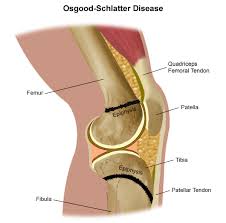 Is your child complaining of anterior knee pain during sports/play activities? They may be suffering from Osgood-Schlatter disease, a common inflammatory condition in growing adolescents. Pain from Osgood-Schlatter disease occurs just below the knee, where the patellar tendon is inserting on the tibialturbercle. Symptoms are commonly triggered with sport activities, especially those involving jumping and running. Active children are most susceptible during growth spurts due to the rapid changes taking place in muscles, tendons, and bones. During sports when the child is running, jumping, etc, repetitive contraction of the quadriceps pulls on the patellar tendon, which pulls on its insertion point on the tibial tubercle, causing irritation/inflammation and often a more pronounced and tenderbump on the front of the shin.
Is your child complaining of anterior knee pain during sports/play activities? They may be suffering from Osgood-Schlatter disease, a common inflammatory condition in growing adolescents. Pain from Osgood-Schlatter disease occurs just below the knee, where the patellar tendon is inserting on the tibialturbercle. Symptoms are commonly triggered with sport activities, especially those involving jumping and running. Active children are most susceptible during growth spurts due to the rapid changes taking place in muscles, tendons, and bones. During sports when the child is running, jumping, etc, repetitive contraction of the quadriceps pulls on the patellar tendon, which pulls on its insertion point on the tibial tubercle, causing irritation/inflammation and often a more pronounced and tenderbump on the front of the shin.
Continue Reading »
Written by Chelsea on June 20, 2015 |
 After 9 long months of undergoing various physical changes that ends with the most grueling task of all, childbirth, you may be wondering when and how you can start exercising again. While it may seem like the last thing you want to do, exercising following pregnancy can be incredibly beneficial once you are cleared by your doctor. Benefits of exercise postpartum can:
After 9 long months of undergoing various physical changes that ends with the most grueling task of all, childbirth, you may be wondering when and how you can start exercising again. While it may seem like the last thing you want to do, exercising following pregnancy can be incredibly beneficial once you are cleared by your doctor. Benefits of exercise postpartum can:
Continue Reading »
Written by Chelsea on June 13, 2015 |
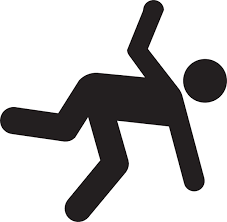 In our last article, we discussed what the term “balance” refers to and a little bit about each of the systems that work together in order to improve our stability. It is important to understand that many people do have balance deficits, and unfortunately falls are very common, especially as we age. According to the CDC, studies show that approx. 1 out of 3 older adults (65+) fall each year. These falls can lead to significant injuries, like fractures and brain injuries, and can also induce a significant fear of falling again. But there are simple ways one can help to reduce their risk of falling.
In our last article, we discussed what the term “balance” refers to and a little bit about each of the systems that work together in order to improve our stability. It is important to understand that many people do have balance deficits, and unfortunately falls are very common, especially as we age. According to the CDC, studies show that approx. 1 out of 3 older adults (65+) fall each year. These falls can lead to significant injuries, like fractures and brain injuries, and can also induce a significant fear of falling again. But there are simple ways one can help to reduce their risk of falling.
Continue Reading »
Written by Chelsea on June 5, 2015 |
 Balance is often discussed as something that people need improvements in. But what exactly does the term “balance” refer to? Our sense of balance comes from the input of 3 different sensory systems that coordinate to help us maintain stability. These three systems are the vestibular system, proprioception, and the visual system.
Balance is often discussed as something that people need improvements in. But what exactly does the term “balance” refer to? Our sense of balance comes from the input of 3 different sensory systems that coordinate to help us maintain stability. These three systems are the vestibular system, proprioception, and the visual system.
Continue Reading »
Written by Debbie on May 29, 2015 |
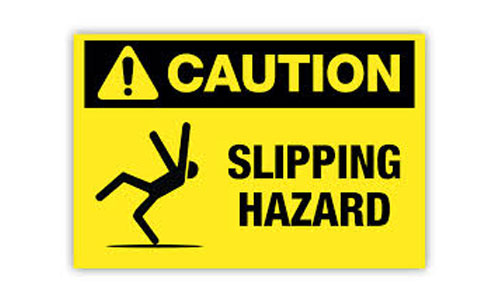
In the U.S., up to 10,000 people are seen in the emergency room daily as a result of sports related injuries. Many injuries are because of falling, or more specifically, from using an improper falling technique. Learning to fall safely may prevent painful, sometimes serious injuries. There are general principles as well as more specific to sport activities that you will find interesting and effective. Here are some important tips:
Continue Reading »




 Most people have heard of plantar fasciitis and know that it is a fairly common affliction of the foot. But many fewer individuals know what plantar fasciitis is (and how in the world “fasciitis” is actually pronounced!). Plantar fasciitis (“fash-ee-itis”) is a condition that affects the plantar fascia, a band of dense connective tissue (“fascia”) located at the bottom, or “plantar” surface of the foot, typically at the area of the heel bone (calcaneus). One of the most common foot problems addressed by health care professionals, plantar fasciitis is thought to affect upwards of 2 million Americans per year, and is estimated to affect one in ten individuals during their lifetime.
Most people have heard of plantar fasciitis and know that it is a fairly common affliction of the foot. But many fewer individuals know what plantar fasciitis is (and how in the world “fasciitis” is actually pronounced!). Plantar fasciitis (“fash-ee-itis”) is a condition that affects the plantar fascia, a band of dense connective tissue (“fascia”) located at the bottom, or “plantar” surface of the foot, typically at the area of the heel bone (calcaneus). One of the most common foot problems addressed by health care professionals, plantar fasciitis is thought to affect upwards of 2 million Americans per year, and is estimated to affect one in ten individuals during their lifetime.
 Ankle sprains are the most common injury of the lower extremity, affecting a large percentage of the sporting population, especially those participating in contact and collision sports such as basketball, football and soccer. Ankle sprains are especially prevalent in younger athletes, with the greatest incidence of injury occurring duringthe mid to late teen years. Ankle sprains are commonly underestimated regarding the functional restrictions that take place and the long-term negative effects that can occur among those affected. Recurrence of ankle sprains is estimated to be as high as 40-70%, especially among individuals participating in higher risk sports. Long-term negative effects can include need for surgical repair of damaged ligaments, and cartilage damage, also known as osteoarthritis. Clearly, the mindset of an ankle injury as “just a sprain” needs to be reconsidered.
Ankle sprains are the most common injury of the lower extremity, affecting a large percentage of the sporting population, especially those participating in contact and collision sports such as basketball, football and soccer. Ankle sprains are especially prevalent in younger athletes, with the greatest incidence of injury occurring duringthe mid to late teen years. Ankle sprains are commonly underestimated regarding the functional restrictions that take place and the long-term negative effects that can occur among those affected. Recurrence of ankle sprains is estimated to be as high as 40-70%, especially among individuals participating in higher risk sports. Long-term negative effects can include need for surgical repair of damaged ligaments, and cartilage damage, also known as osteoarthritis. Clearly, the mindset of an ankle injury as “just a sprain” needs to be reconsidered. Is your child complaining of anterior knee pain during sports/play activities? They may be suffering from Osgood-Schlatter disease, a common inflammatory condition in growing adolescents. Pain from Osgood-Schlatter disease occurs just below the knee, where the patellar tendon is inserting on the tibialturbercle. Symptoms are commonly triggered with sport activities, especially those involving jumping and running. Active children are most susceptible during growth spurts due to the rapid changes taking place in muscles, tendons, and bones. During sports when the child is running, jumping, etc, repetitive contraction of the quadriceps pulls on the patellar tendon, which pulls on its insertion point on the tibial tubercle, causing irritation/inflammation and often a more pronounced and tenderbump on the front of the shin.
Is your child complaining of anterior knee pain during sports/play activities? They may be suffering from Osgood-Schlatter disease, a common inflammatory condition in growing adolescents. Pain from Osgood-Schlatter disease occurs just below the knee, where the patellar tendon is inserting on the tibialturbercle. Symptoms are commonly triggered with sport activities, especially those involving jumping and running. Active children are most susceptible during growth spurts due to the rapid changes taking place in muscles, tendons, and bones. During sports when the child is running, jumping, etc, repetitive contraction of the quadriceps pulls on the patellar tendon, which pulls on its insertion point on the tibial tubercle, causing irritation/inflammation and often a more pronounced and tenderbump on the front of the shin. After 9 long months of undergoing various physical changes that ends with the most grueling task of all, childbirth, you may be wondering when and how you can start exercising again. While it may seem like the last thing you want to do, exercising following pregnancy can be incredibly beneficial once you are cleared by your doctor. Benefits of exercise postpartum can:
After 9 long months of undergoing various physical changes that ends with the most grueling task of all, childbirth, you may be wondering when and how you can start exercising again. While it may seem like the last thing you want to do, exercising following pregnancy can be incredibly beneficial once you are cleared by your doctor. Benefits of exercise postpartum can: In our last article, we discussed
In our last article, we discussed  Balance is often discussed as something that people need improvements in. But what exactly does the term “balance” refer to? Our sense of balance comes from the input of 3 different sensory systems that coordinate to help us maintain stability. These three systems are the vestibular system, proprioception, and the visual system.
Balance is often discussed as something that people need improvements in. But what exactly does the term “balance” refer to? Our sense of balance comes from the input of 3 different sensory systems that coordinate to help us maintain stability. These three systems are the vestibular system, proprioception, and the visual system.